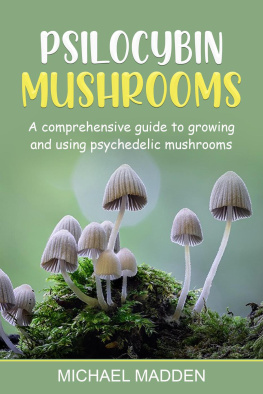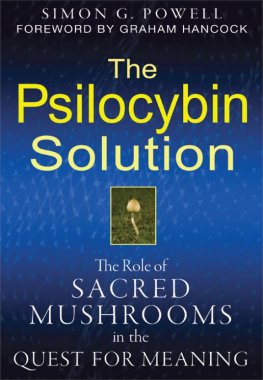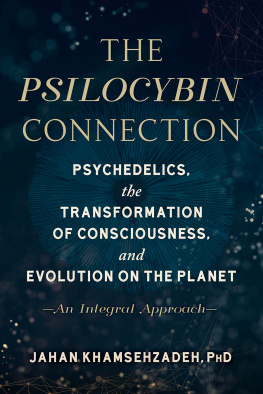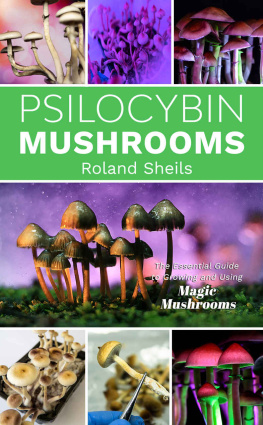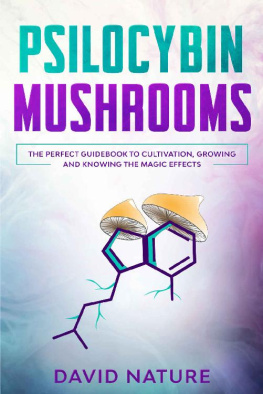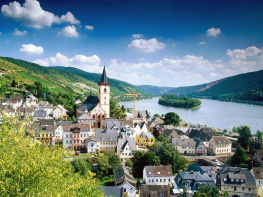Psilocybin Mushrooms
A Comprehensive Guide to Growing and Using Psychedelic Mushrooms
Table of Contents
M ushrooms are mushrooms , not plants that exist in another class side by side. They grow from spores, usually in decaying materials from plants, in the ground, or on things like logs. Some mushrooms contain minute life and nutrients used to add an earthy flavor and meaty texture to everything from pizza to risotto. "Psilocybin mushrooms" is the generic name given to mushrooms that contain psilocybin (a natural psychedelic compound). Psilocybin is a hallucinogenic substance. "Psilocybin" mushrooms are often defined by the fact that they contain psilocybin, a compound with hallucinogenic effects that alters perception.
Psilocybin mushrooms have been used under therapeutic conditions to treat a wide range of ailments, including obsessive-compulsive disorder, cluster headache, anxiety, addiction, and depression. Psilocybin mushrooms have a long history of use in Mesoamerica in spiritual and religious rituals. They are also currently one of the most popular recreational psychedelics in Europe and the United States. These mushrooms are famous for the psychedelic effects they have on those who eat them, and also for the antediluvian practice dating back to prehistoric "mushroom cults" and the shamans who could have inspired Santa Claus. Archaeological findings from the Sahara suggest that people have been using hallucinogenic mushrooms for over 7000 years. Fungi are represented in the prehistoric art of different geographic regions. They are sometimes religiously symbolic, especially in the context of various rights and ceremonies. The Psilocybin mushroom grows in much of South America, Mexico, Malaysia, Indonesia, and India, although you can also find them in eastern Australia and the southern United States.
It is thought that they have been available for thousands of years in religious rites and that the Aztecs certainly knew about them. Additionally, Psilocybin mushrooms are widely viewed as a possible miraculous psychiatric drug. Studies have shown promising effects in treating depression. For example, a 2017 survey shows that psilocybin "can successfully restore the activity of important brain circuits that are known to play a role in depression." They appear to stimulate emotional reactivity in the brain. A recent study suggests that Psilocybin mushrooms can relieve depression without the same side effects associated with antidepressants and Selective Serotonin Reuptake Inhibitors (SSRIs). In recent years, regulatory agencies such as the FDA and DEA have loosened the rules on the use of psilocybin in controlled scientific studies more than any other psychedelic. A new survey of psilocybin uses it as a tool of Thera-potica and as part of personal/spiritual development methods. Psychedelic mushrooms are divided into two categories, and each type is categorized by a different mix of ingredients that make it a "Psilocybin mushroom." There are over 180 species of Psilocybin mushrooms all over the world. In fact, the only continent where they don't grow is Antarctica. Many species also contain psilocin, another similar compound to psilocybin.
These various mushrooms come from a dozen genera. Nonetheless, they are often grouped as "psilocybin mushrooms." Many of these species fit the family Psilocybe, including the species known as psilocybin cubensis ("golden cap") and psilocybin semilanceata ("cover of freedom"). Psilocybin fungi can be very different according to recent studies because psilocybin genes are not inherited from a mutual ancestor but are directly transferred between unrelated species in a spectacle named "horizontal gene transmission." Psilocybin may have developed as a defense mechanism for the mushroom, which discourages parasites "that feed on insects" to change their mind.
Magic mushrooms, wild or cultivated, are mushrooms containing 'psilocybin,' the main hallucinogenic psychoactive component. They are considered a Class I drug, which means they have a high potential for misuse and have not been widely accepted for medical use in the United States. In addition to being labeled as magic mushrooms, they are also known as mushrooms, molds, blue meanders, golden tops, caps for freedom, blocks, and freedom. Magic mushrooms are often dried and consumed by mixing them in food or drink, although some people eat freshly picked magic mushrooms.
Psilocybin mushrooms are known to cause hallucinations, a sense of belonging to nature, a feeling of sleep or relaxation, and introspection, but they can also produce effects such as nervousness, terror, and paranoia. These types of mushrooms commonly look like normal mushrooms with long, thin stems. They can be whitish-gray and dark brown, light brown, or white in color.
These mushrooms are often mixed with milk or drunk like tea and can also be consumed with marijuana or tobacco. Liquid psilocybin, the natural mystical material found in Liberty capsules, is also available. In this rare case, the dark brown liquid is supplied in a small ampoule. Magic mushrooms are hallucinogenic drugs, which means they can make you see, hear and perceive hallucinations that seem real but are not. However, magic mushroom experiences are highly variable and believed to be influenced by environmental factors. These substances have a long history of being associated with spiritual experiences and self-discovery. Many people argue that natural substances like psilocybin mushrooms, marijuana, and mescaline are sacred medicines that allow people to reach higher spiritual states. Others take these mushrooms to simply experience euphoria, empathy, and a distorted sense of time.
Chapter One: History of Psilocybin Mushrooms

E verything has a beginning - scientists have even been able to compile evidence that the Universe has a beginning, and it's still expanding at this present moment. Psilocybin Mushrooms became widely known after R. W. Gordon's "rediscovery" of the shamanic use of Psilocybin-containing mushrooms back in the 1950s in Mexico. At this time, the science behind growing mushrooms, either indoors or outdoors, was still in its infancy. The only Mushroom species prevailing in the West around that time wasn't the Psilocybe but the Agaricus Bisporus. They called it the common white button mushroom. The methods used for growing the common white button mushrooms were closely related to the ones used in France during the 17th century. Things were very much wild during those times: Growers would get their mushrooms from the wild, then bring them back home. They would grow them in rows of horse manure in mycelium-rich soil, usually in a naturally climate-controlled cave. Instruments of science were in their infancy during these times. Hence, even though the method worked, issues with unpasteurized substrate often contaminated the process.

